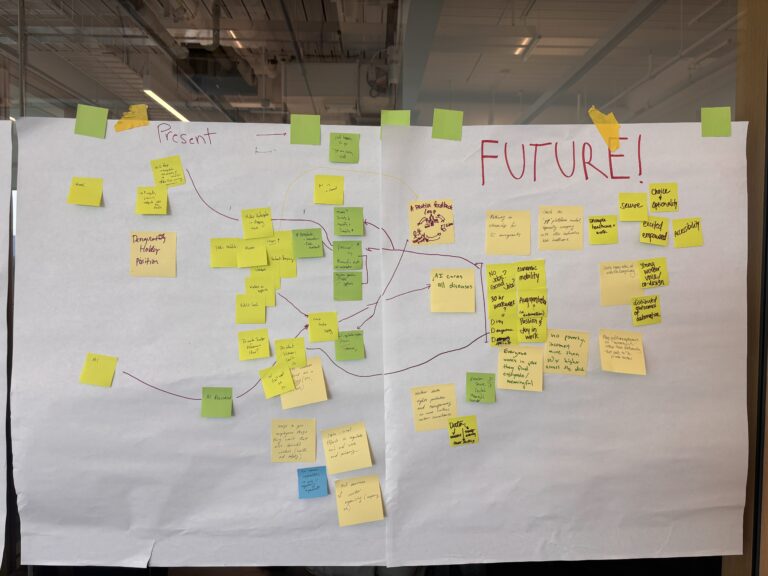by Laura Maher
Laura Maher is a Relationship Manager at Siegel Family Endowment
Gathering people together in a room doesn’t produce results on its own. Putting the right voices in conversation with one another is just the first step to creating something actionable – and without the right structures in place, a convening can end up producing a lot of noise instead of a clear path forward.
Over the last year, SFE has co-hosted a series of roundtables for Future Workforce Now, a collaborative effort between the National Governors Association, FHI 360, and the Fab Foundation, to explore the implications of technological change for the future of work in state and local contexts. Attendees come from a wide range of backgrounds and areas of expertise – including state policymakers, local workforce leaders, K-12 education professionals, economists, creative thinkers, corporate leaders, and funders. Our objective is to work together to create an adaptable toolkit for state policy change.
We’ve learned a lot about what we as funders can do to be effective conveners, and how to position gatherings of diverse stakeholders to be productive for everyone involved. These are our key takeaways.
Be a thought partner at every stage of planning
When we decided to partner with Future Workforce Now on this initiative, we took the word “partner” very seriously. We set up monthly meetings with representatives from each host organization to discuss the direction and spirit of the convenings. We helped design the event flow, organized breakout sessions, tweaked content, and built the guest list. We also ran public consultation surveys, and provided on-site moderator support.
State your goals clearly, and make them public
Many stakeholder gatherings are doomed to be unproductive because of vague objectives. To correct against this, every Future Workforce Now agenda clearly listed its goals in the header, and the beginning of each session included an explicit reminder from the moderators. We found that being specific about why you’re asking for people’s time increases the likelihood that they’ll contribute what you need from them.
Gather the right mix of participants
Making state workforce policy requires input from many different stakeholders – K-12 students and teachers, post-secondary educators, colleges and universities, VoTech, state employees, budget offices, private companies, and elected officials from all levels of government. Since any solution would require the buy-in of these varied stakeholders, it was important to have representatives from every potential stakeholder group. As we put together the invite lists, we routinely asked ourselves, who else needs to be in the room and who is still left out?
Leverage the expertise in the room
The goal of these roundtables was to workshop new ideas, and not just share existing knowledge. We encouraged the partners to avoid panels and keynotes, and to instead focus on small group sessions that would make the most of having so many smart people in the same room. Our partners took this feedback to heart, and organized a day full of “challenges,” where participants gathered to reflect on existing options and to workshop new ideas.
Practice the art of moderation
We were fortunate to hear many perspectives from the diverse range of participants in attendance, but ensuring that everyone gets a voice is complex. The leaders of FWN staffed each breakout group with a dedicated moderator who would guide the conversation, and step in to draw responses from participants who might not have contributed otherwise.
Collect feedback systematically – and apply it!
NGA hosted monthly working sessions for a group of key partners and funders. This group also debriefed after each roundtable, and systematically about used this time to reflect, share constructive feedback, and brainstorm iteration strategies that helped improve each subsequent event.





